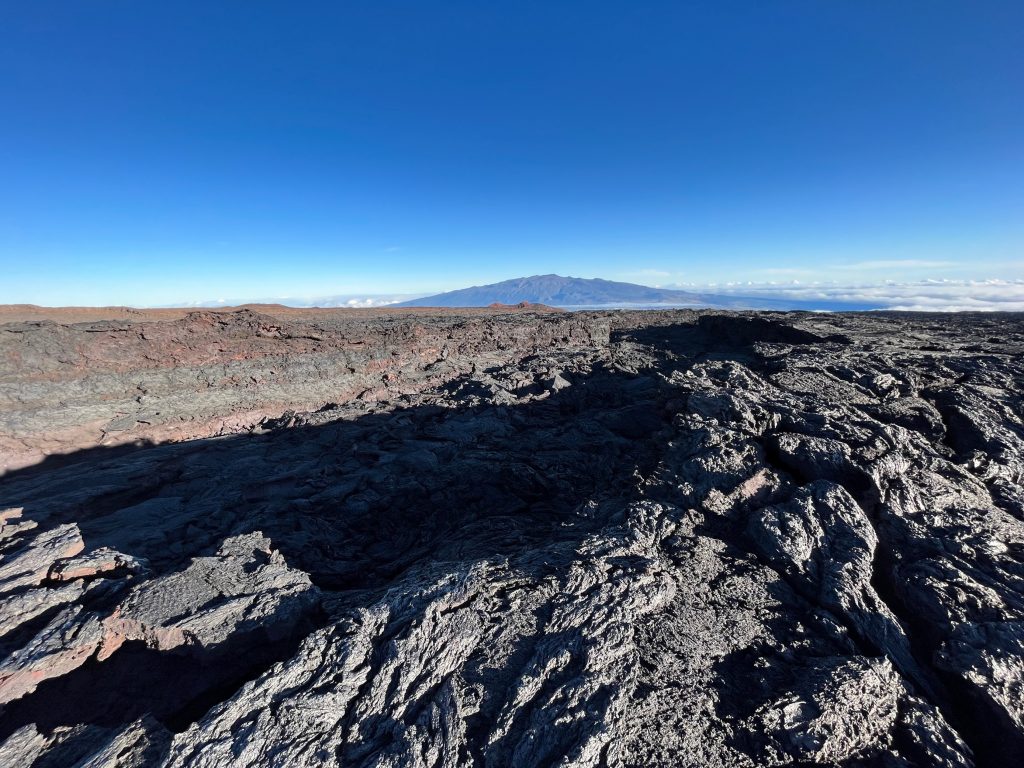Focus at Mauna Loa shifts from eruption response to assessment and demobilization

Teams from the Hawai‘i Emergency Management Agency who were deployed to Hawai‘i island for the Mauna Loa eruption are shifting their focus to damage assessment as volcanic activity paused recently.
The shift its effort to compiling damage and impact estimates could be used to support a request for federal disaster assistance.
“Some forms of federal aid are only available if Hawai‘i pursues a major disaster declaration, and that requires proof that the State and Hawai‘i County incurred certain threshold costs for protective measures, damages, and impacts,” said Luke Meyers, HI-EMA administrator in a department press release. “The damage information we’re collecting from our partners will be used to determine what kinds of federal assistance and reimbursement might be available.”
Since the Mauna Loa eruption began late on Nov. 27, Hawai‘i County and a host of partners began working to manage and monitor various aspects of the incident, including:
- Establishing temporary shelters in the early hours of the eruption;
- Damage and potential damage to roads and infrastructure;
- Air quality monitoring and protective equipment against volcanic emissions;
- Overflights and instrument observation to track the lava, hot spots, and emissions;
- Traffic control measures and security — including deployment of 20 Hawai‘i National Guard personnel — to prevent trespassing and visitor injuries, vehicle collisions, and unauthorized parking along the Daniel K. Inouye Highway.
HI-EMA deployed personnel as part of that cooperative effort to assist Hawai‘i County Civil Defense Agency with its operations, planning, logistics and other duties throughout the two-week incident.
The incident next moves into the resilience phase, which involves collecting information, verifying costs and damage assessments, and documenting best practices to mitigate harm.
HI-EMA reports that one possible source of reimbursement would be a federal Major Disaster Declaration, which has minimum cost thresholds to qualify. The current federal thresholds for public assistance to Hawai‘i under a major disaster declaration are about $890,000 for Hawai‘i County and $2.58 million for the State.
Meyers encouraged partner agencies to submit their eligible costs, damages, and impact estimates as soon as possible.
“Fortunately, the Mauna Loa eruption wound up posing no direct lava threat to any of our communities, but it still caused substantial damage and our partners incurred costs to protect the public,” he said in a department release. “The federal government may be able to assist with those costs, but we have to do our homework now to determine that.”.









